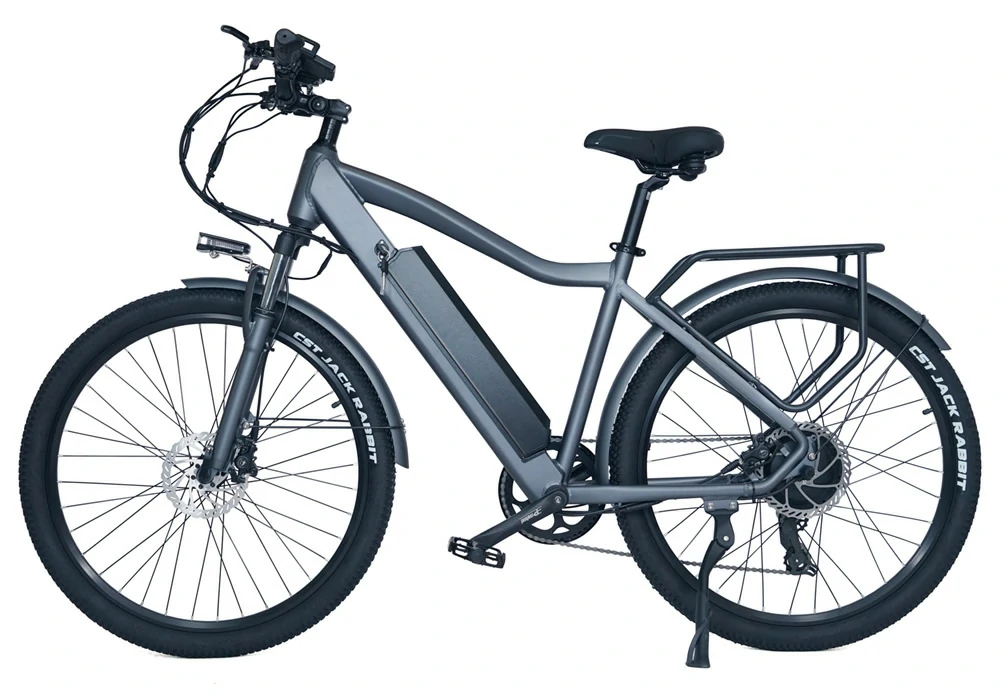Common faults and solutions of electric bicycles
2025-05-27
1、 Battery system malfunction
1. The battery cannot be charged or is not fully charged
- Phenomenon: The charger has no response and the battery level does not increase for a long time.
- reason:
- Battery aging (end of life).
- The internal fuse of the battery is blown or has poor contact.
- Charger malfunction (no output voltage or abnormal indicator light).
- solve:
- Replace the aging battery, check and replace the fuse.
- Adjust the contact between the battery and the safety seat to ensure stability.
- Replace or repair the charger and avoid using non original equipment.
2. Significant decrease in battery life
- Phenomenon: The driving range is significantly reduced when fully charged.
- reason:
- Single battery damage (such as inconsistent voltage).
- Low temperature environment leads to a decrease in the efficiency of active substances.
- solve:
- Use professional equipment to test the battery pack and replace faulty units.
- Avoid charging below 0 ℃ and store at 50% battery capacity.
3. Abnormal heating of the battery
- Phenomenon: The battery case is hot to the touch while charging or riding.
- reason:
- Overcharging leads to an increase in internal pressure.
- Poor heat dissipation or internal short circuit of the battery pack.
- solve:
- Stop using immediately and check the charger voltage (should be ≤ 59V).
- Send for repair and testing, and replace the battery pack if necessary.
2、 Motor system malfunction
1. The motor rotates and does not rotate/does not rotate
- Phenomenon: The motor suddenly stops or has difficulty starting during cycling.
- reason:
- Insufficient battery power or poor contact of contacts.
- Dirt on the photosensitive film inside the speed control handle and controller malfunction.
- solve:
- After fully charging, check if the contacts are oxidized and polish them with sandpaper.
- Clean the photosensitive film, and if it is ineffective, replace the speed control handle or controller.
2. Motor abnormal noise/vibration
- Phenomenon: The motor makes abnormal noises or the body vibrates while riding.
- reason:
- Bearing wear, magnetic steel detachment, or foreign objects getting stuck.
- solve:
- Disassemble the motor to inspect the bearings, apply lubricating grease or replace them.
- Clean up foreign objects and tighten the magnetic steel.
3. Insufficient power
- Phenomenon: The motor is powerless when climbing or carrying heavy loads.
- reason:
- Motor overheating protection (temperature exceeding 80 ℃).
- Hall sensor malfunction or poor circuit contact.
- solve:
- Suspend use until cooled down and check if the Hall element is damaged.
- Reconnect the circuit to ensure good contact.
3、 Controller malfunction
1. The vehicle cannot be started
- Phenomenon: There is no response when turning on the power lock.
- reason:
- Controller burned out and switch signal line disconnected.
- solve:
- Check if the 5V power supply of the controller is normal. If not, replace the controller.
- Use a multimeter to test the voltage of the switch signal line (1-4.2V).
2. Unstable/jerky vehicle speed
- Phenomenon: Sudden changes in speed while driving.
- reason:
- Controller parameter drift and Hall signal abnormality.
- solve:
- Reset controller parameters (requires professional equipment).
- Check if the motor Hall element is damaged.
4、 Brake system malfunction
1. Brake failure
- Phenomenon: The brake handle has no resistance and poor braking effect.
- reason:
- Brake pad wear and brake wire breakage.
- solve:
- Replace the brake pads (adjust the clearance for drum brakes).
- Check if the brake wire is broken and reconnect it.
2. Brake noise
- Phenomenon: A sharp friction sound is emitted when braking.
- reason:
- The brake disc is contaminated with impurities and the brake pads are deformed.
- solve:
- Clean the contact surface between the brake disc and brake pad.
- Replace the deformed brake pads and adjust the tension of the brake spring.
5、 Other common questions
1. The car lights are not on
- Phenomenon: The headlights or turn signals cannot be illuminated.
- reason:
- The light bulb is burnt out, the circuit is short circuited, and the switch is damaged.
- solve:
- Replace the bulb with the same specification and check if the circuit is damaged.
- Use a multimeter to test the continuity of the switch.
2. Tire leakage/blowout
- Phenomenon: Insufficient tire pressure or sudden deflation during driving.
- reason:
- Nailing, high tire pressure (over 45psi), aging and cracking.
- solve:
- Use tire repair fluid or replace inner tube.
- Regularly check tire pressure and avoid exposure to high temperatures.
3. Short circuit/poor contact of the circuit
- Phenomenon: Intermittent power outage of the vehicle or garbled dashboard.
- reason:
- Rainwater erosion, loose plugs, and aging wiring harnesses.
- solve:
- Wrap the damaged wire harness with insulating tape.
- Reconnect all plugs to ensure good contact.
6、 Maintenance suggestions
- Regular maintenance: Check the battery, brake, and bearing status every six months.
- Correct charging: Avoid recharging when the battery is depleted, use the original charger.
- Waterproof and moisture-proof: Avoid contact with deep water and dry key components promptly after rain.
- Professional maintenance: Malfunctions involving high-voltage batteries or controllers require professional personnel to operate.

